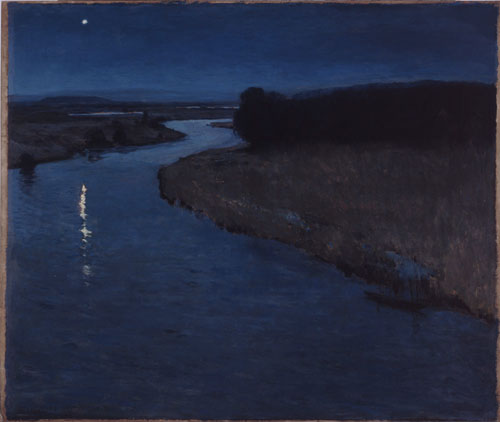A typical museum exhibits ten percent (or less) of the objects entrusted to its care, and the Memorial Art Gallery is no exception. This exhibition is your opportunity to see works from MAG’s permanent collection that are seldom on view to the public.
The works, selected by staff and curators, include light-sensitive drawings that are infrequently shown because of their fragile nature, works that are awaiting conservation or repair or have recently undergone treatment, and odd but interesting objects that simply don’t fit any of the Gallery’s storylines.
Scores of these works will come out of the shadows—some for the first time in decades—for this unusual exhibition of hidden treasures. From an Egyptian storage jar dating to before 3400 BCE to a 2003 painting by Rochester artist Carol Acquilano, the rarely seen treasures range across the centuries. They include works acquired long ago—Eugen Bracht’s painting Morning Star came into the collection in 1913, the year of the Gallery’s founding—and works acquired in the last decade.
The artists represented include a number who played important roles at MAG. Among them (to cite only a few) are Ralph Avery, Peter Berg, Emma Lampert Cooper, E. E. Cummings, George L. Herdle, Robert Marx, John C. Menihan, Luvon Sheppard and Frans Wildenhain. Also on view are works by such major names in art history as Edgar Degas, Walt Disney, Albrecht Dürer, Helen Frankenthaler, Thomas Gainsborough, Keith Haring, David Hockney, Hans Hofmann, Winslow Homer, Edward Hopper, Paul Klee, Käthe Kollwitz, Fernand Léger, Roy Lichtenstein, Jean-François Millet, Henry Moore, Robert Motherwell, Georgia O’Keeffe, Pablo Picasso, Man Ray, Rembrandt van Rijn, Edward Ruscha, Giovanni Battista Tiepolo, Joyce Treiman and Jerome Witkin.
In recognition of the Gallery’s centennial year, one section of It Came from the Vault celebrates the collecting legacy of MAG’s six directors.
This exhibition is sponsored by the Gallery Council of the Memorial Art Gallery and Dr. Anne-Marie Logan. Additional support is provided by the Herdle-Moore Fund and Dr. Vivian A. Palladoro.

